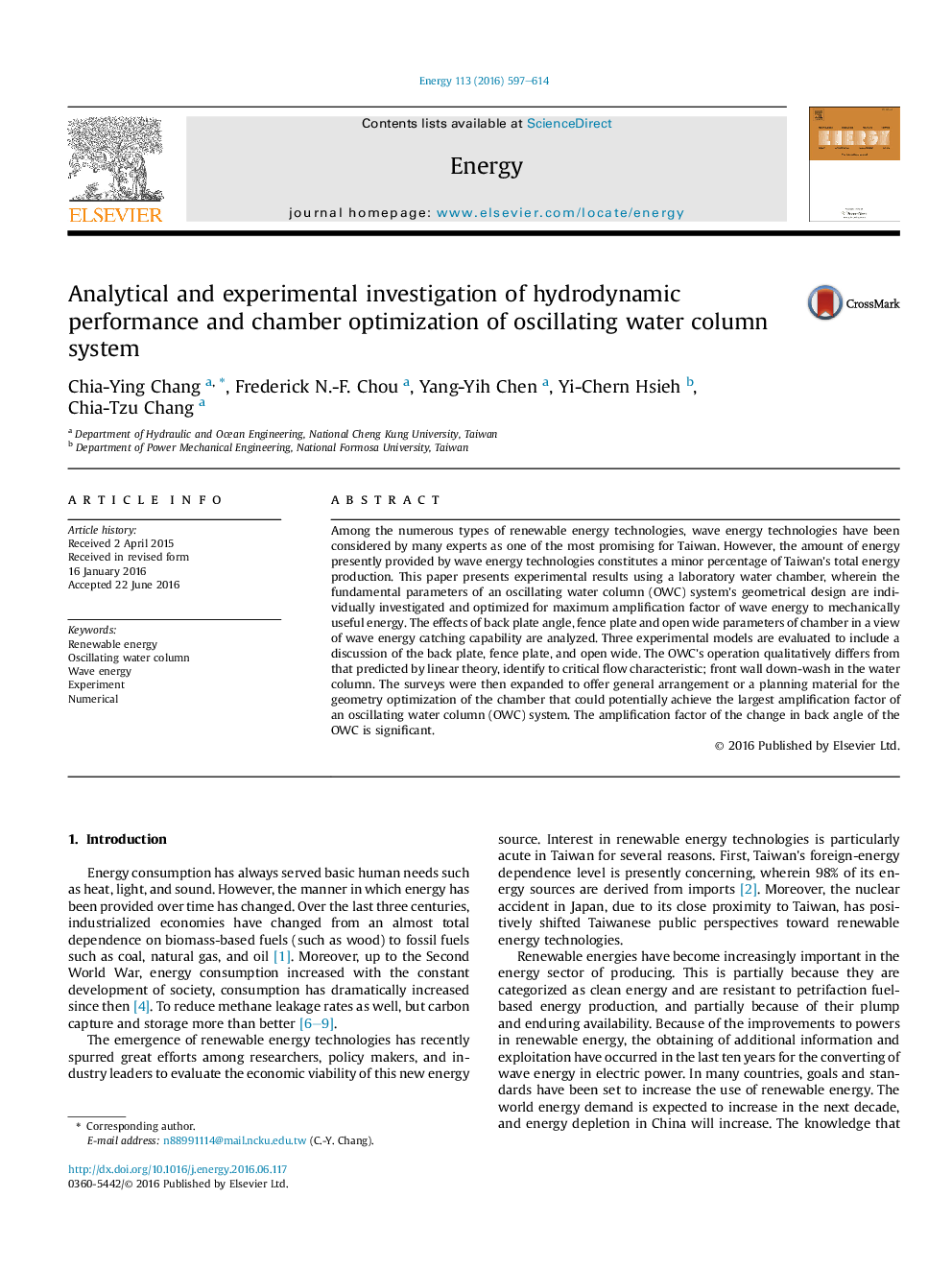| Article ID | Journal | Published Year | Pages | File Type |
|---|---|---|---|---|
| 1730765 | Energy | 2016 | 18 Pages |
•Changing back angle of the OWC is significant.•The result are similar.•Reducing the front-end angle is significantly.•The back plate angle is better than the vertical.
Among the numerous types of renewable energy technologies, wave energy technologies have been considered by many experts as one of the most promising for Taiwan. However, the amount of energy presently provided by wave energy technologies constitutes a minor percentage of Taiwan's total energy production. This paper presents experimental results using a laboratory water chamber, wherein the fundamental parameters of an oscillating water column (OWC) system's geometrical design are individually investigated and optimized for maximum amplification factor of wave energy to mechanically useful energy. The effects of back plate angle, fence plate and open wide parameters of chamber in a view of wave energy catching capability are analyzed. Three experimental models are evaluated to include a discussion of the back plate, fence plate, and open wide. The OWC's operation qualitatively differs from that predicted by linear theory, identify to critical flow characteristic; front wall down-wash in the water column. The surveys were then expanded to offer general arrangement or a planning material for the geometry optimization of the chamber that could potentially achieve the largest amplification factor of an oscillating water column (OWC) system. The amplification factor of the change in back angle of the OWC is significant.
